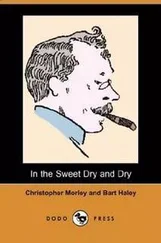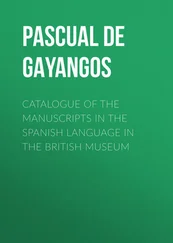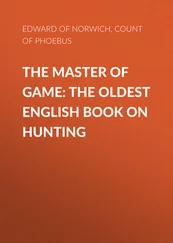From the point of view of OE phonology, retention of i in unaccented syllable would be compatible with the early date of the glosses in the “Echternach Gospels”, which are generally dated sec. viii (e.g. BStK 1478 [no. 774b]). Although PGmc. *ƀi- (Orel 2003: 44–45) was generally reduced in unstressed positions to OE be- , and remained high front only in nominal formations where the stress came to rest on it, such as OE biggeng ‘practice’ (stressed on the first syllable) vs. OE begangan ‘to practice’ (stressed on the second), retention of i is in fact attested in very early texts (Campbell 1959: § 369). From the point of view of lexicography, however, it is important to note that among the various prefixal variants of -ginnan , be-ginnan is by far the least common in OE, with OE inginnan and OE onginnan being far more typical (as was already pointed out by Muller 1985: 69). Moreover, bi-ginnan with prefixal bi- is never attested in an early OE text and only rarely in the whole corpus, anyway: Out of 200 forms of OE beginnan recorded in the DOEC 2009, only two forms show the prefix bi- : it is attested once in the continuous gloss of the “Rushworth Gospels” (Oxford, Bodleian Library Auctarium D. 2. 19Oxford, Bodleian LibraryAuctarium D. 2. 19 [K:292], with OE biginnes glossing L. coeperitis in Lk 3:8), probably added sec. x, and once in two late copies (sec. xiv and sec. xvi) of a royal L. grant with OE bounds (Sawyer 1968: no. 556; dated A.D. 951, OE bigan ). The two late copies may safely be ruled out as evidence, as the prefix bi- is in accordance with ME usage ( MED s.v. “biginnen”) and hence not necessarily original. With the “Rushworth Gospels”, on the other hand, it is interesting to note that the “Lindisfarne Gospels” (British Library Cotton Nero D. ivLondon, British LibraryCotton Nero D. iv [K:165]), which are assumed to have been copied from the same exemplar, show OE beginnes . Incidentally, OE biginnes is the only form of the verb beginnan in the “Rushworth Gospels”; the far more common synonym is OE onginnan , occurring more than two dozen times in the Gospel of Luke alone (cf. Tamoto 2013).
Summing up, there is no unequivocal evidence that the form bigine cannot be OE; yet, bearing in mind that the OHG cognate of the verb shows prefixal bi- ( AWB s.v. “bi-ginnan”, not including this particular gloss in its apparatus of forms) and that the other 11 vernacular glosses in the “Echternach Gospels” are “mehr oder weniger sicher” OHG (Glaser 1997: 18),13 I am not inclined to accept bigine as an OE form at the moment. CLA ’s and Ó Cróinín’s appraisals of the gloss as OE are not provided with verifiable analyses. Muller (1985) argues in favour of OHG; Nievergelt & De Wulf (2015: 103) are reluctant to decide either in favour of OHG or OE, they rather propose some continental West Germanic context, other than OHG. Therefore, the “Echternach Gospels” are not included in the Catalogue below, as they cannot confidently be said to feature an OE dry-point gloss until a detailed analysis to that effect is published.
München, Bayerische Staatsbibliothek Clm 6402München, Bayerische StaatsbibliothekClm 6402 ( BStK : 1060–1062 [no. 536]) features a large number of dry-point additions, consisting of letters, doodles or unidentifiable scratches. The main part of the MS was perhaps written in Verona, sec. viii or ix; the first part of the MS (ff. 1–18) was added in Freising, sec. viii 4/4, where the MS remained until the secularization of 1803 (cf. BStK : 1061; Nievergelt 2009: 180). Nievergelt (2009: 180–187) lists over 60 very difficult dry-point additions, including names and L. glosses, but for most of them only individual letters are decipherable to him. Only one dry-point gloss added in a partial vowel substitution cipher (a=b; u = x ) is sufficiently legible for Nievergelt to attempt an interpretation. His reading is OHG(?) inbxbnxịḷị glossing L. inhabitare ‘to dwell in’. Undoing the substitutions, Nievergelt (2009: 182) interprets the gloss tentatively as OHG inbuan uịḷị ‘wants (3 rdpers. sing. pres. ind.) to dwell in’. The reading of the last three letters is doubtful, however, and Nievergelt cautions that the interpretation of the second word is therefore highly speculative.14 More importantly for our concern, however, Nievergelt also points out that OE background is at least imaginable for the first word inbuan , because the form of this infinitive, which glosses the infinitive inhabitare of the L. base text (JUVENCUS, Evangeliorum libri quattuor I, 301), would be the same in both OHG and OE.15 The evidence is inconclusive at the moment, as none of the other dry-point fragments supplies enough information to corroborate either interpretation. No OE dry-point glosses have been associated with Freising so far and since the MS also features 22 OHG ink glosses, I do not think that the MS ought to be considered for inclusion in the Catalogue , based on the present evidence. Further work on these difficult glosses may perhaps provide sufficient data to readdress the issue one day.
2.4 Non-English Dry-Point Glossing
2.4.1 Dry-Point Glossing in LatinLatin dry-point glosses
Dry-point writing in medieval MSS is not only known from the Anglo-Saxon sphere. From the European Middle Ages there is also evidence for dry-point glossing in Latin, Old High German, Old Saxon, Old Irish and Old Slavonic.
If we bear in mind that the vast majority of written output in medieval Western Europe was produced in Latin, it comes as something of a surprise that the scholarly literature on OE and especially on OHG glosses by far exceeds that on L. glosses. It is probably just because there are so many extant medieval written documents in Latin left to study that the glosses in them are only rarely studied in their own right. Goossens (1974: 32) remarks: “More than anything else a thorough investigation of the Latin gll. belongs to the urgent requirements but so far that study has not even been started”, and Wieland (1984) pithily calls L. glossing “the stepchild of glossologists”.
Important work has been done in the field of L. glossing, though: Wieland (1983) and Stork (1990) present two detailed studies of the L. glossing in two MSS of ARATOR, PRUDENTIUS and ALDHELM, and McCormick (1992) offers a highly interesting edition of more than 600 dry-point glosses in L. and OHG as well as Tironian notes, dating to the mid-9 thc. from the “Palatine Virgil”Vaticano, Vatican Library MS Pal. lat. 1631 (Vaticano, Vatican Library MS Pal. lat. 1631).
Schipper (1994) edits L. dry-point writing from the so-called “Benedictional of St Æthelwold” (London, British Library Additional 49598London, British LibraryAdditional 49598 [G:301]), produced in AD 971×973 in Winchester, which is considered to be “the most lavishly produced manuscript which has survived from Anglo-Saxon England” (Schipper 1994: 17, quoting Michael Lapidge). Short L. phrases of one to four words are added to 13 top margins of that codex. Schipper (1994: 23) deems it possible that further pages had similar notes, but they may have been cut off during rebinding. These notes clearly do not function as glosses, because they were added before the text was written, as Schipper ( ibid. ) concludes from an instance of dry-point writing that is right behind the text now. After a detailed analysis of the collation of the codex, Schipper identifies the dry-point notes to be “compilation notes” that is “rough indication of what benedictions were to be inserted and where” (Schipper 1994: 27). Schipper describes the physical appearance of the dry-point notes as falling into two altogether different groups, namely dry-point notes that were entered with a blunt stylus, leaving nothing but an indentation in the parchment, on the one hand, and dry-point notes that were entered with some sort of metallic stylus, whose metallic residue has since “oxidized to a faint dark reddish colour” (Schipper 1994: 21). Schipper includes photographs of eight of these notes that show the difference in their appearance nicely. The oxidized notes contrast quite strongly with the parchment’s surface and hence it comes as something of a surprise that no-one had noticed them before Schipper took an interest in them (cf. Schipper 1994: 18).1 The “Benedictional of St Æthelwold” may be taken as evidence that at least sometimes the stylus was used in Anglo-Saxon England for writing specifically because it did not leave easily visible traces.London, British LibraryCotton Vespasian A. i2
Читать дальше












